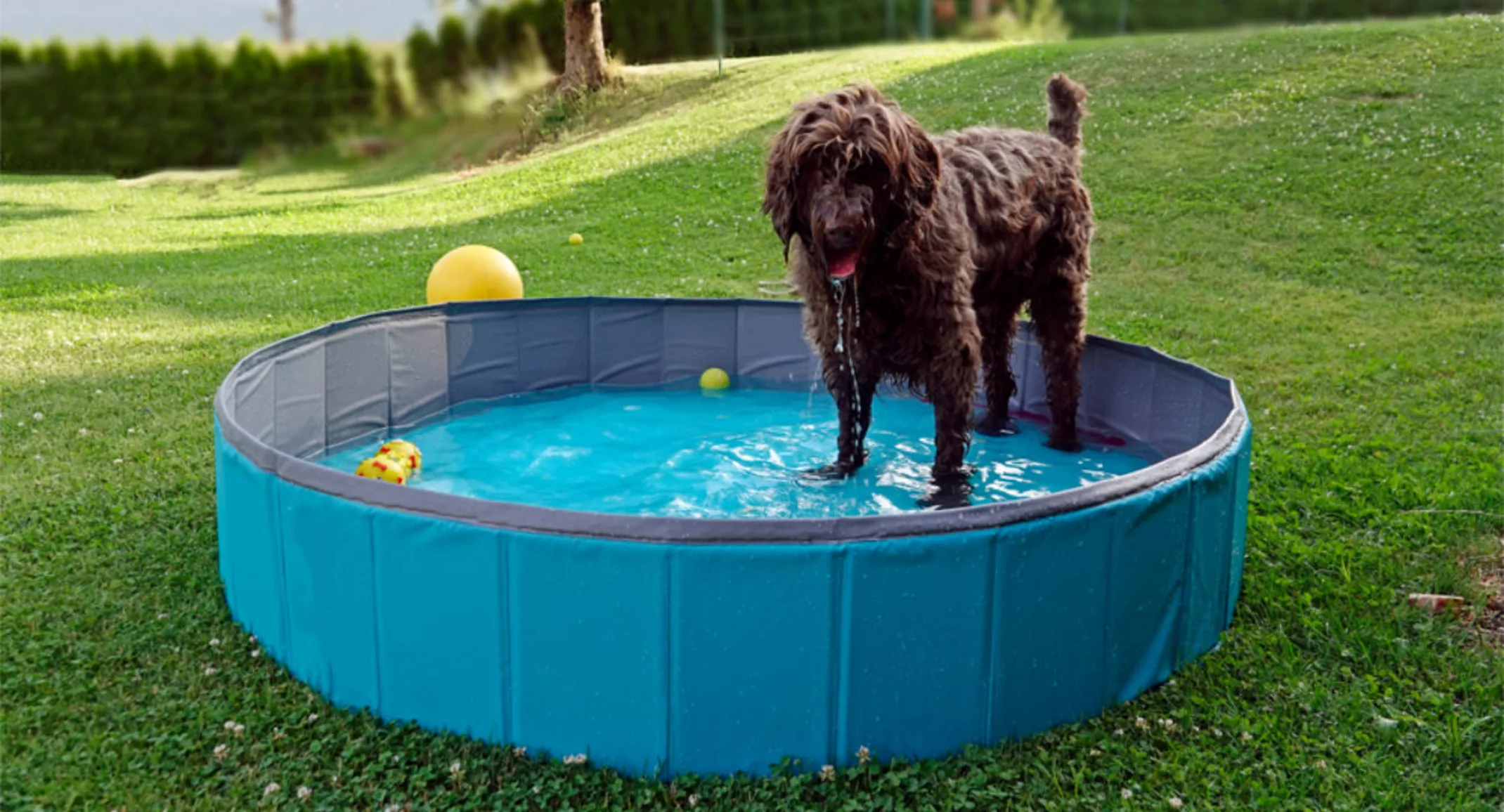Sirius-ly Hot—5 Pet Heat Safety Tips
For Pet Owners

The ancient Greeks blamed the mythological dog Sirius for the intense summer heat, simply because the Dog Star rose and set with the sun between July and August. The oppressive heat period is still known as “the dog days of summer.”
While we know our dogs and cats are not responsible for the sweltering heat, we, like the Greeks, should pay them special attention. Dove Mountain Veterinary has prepared five safety tips to help you know what to watch for this summer.
#1: Recognize heatstroke in pets
In hot weather, pets rely on panting to lower their body temperature through evaporative cooling. Panting can be effective, but has limitations in hot weather. Heatstroke occurs when external temperatures exceed a pet’s normal internal temperature range. At this point, panting no longer exchanges warm air from the lungs for cool outside air—only for more heat. Prolonged high body temperatures lead to irreversible brain, liver, and kidney damage. In severe cases, heatstroke is fatal.
Heatstroke is always an emergency. Pets should be taken to a shady or air conditioned location immediately if they show the following signs:
Excessive panting or drooling
Red gums or tongue
Dilated pupils
Restlessness
Vomiting and diarrhea
Lethargy
Weakness
Collapse
Seizures
Take your pet’s temperature, if possible. While the normal body temperature of cats and dogs is between 100 and 102.5 degrees, heatstroke can raise a pet’s temperature as high as 107 degrees. Offer your pet cool water to drink and call Dove Mountain Veterinary immediately for instructions. If your pet is unconscious or has collapsed, bring them directly to our hospital. Remember, heatstroke always requires emergency veterinary care.
Heatstroke can lead to permanent damage that you do not notice until days after the event. Pets who appear to improve should still be examined by a veterinarian soon after recovery.
#2: Never leave pets unattended outside
Summer is a busy time, and forgetting to let your dog or cat go inside can spell disaster. Pets should never be left outside unattended during hot weather. Morning shade can quickly disappear, leaving an initially shaded pet in full sun. Water can quickly evaporate, heat up, or be spilled, resulting in rapid dehydration. If you must let your pet outside for exercise, keep the time brief—set a timer, check on your pet often, and do not leave home—because a quick errand can easily become a long delay, and an unexpected tragedy for your pet.
If your pet enjoys spending time outdoors, keep them as safe as possible by ensuring adequate shade, ample fresh water, and a cooling mat or bed. Offer your pet regular opportunities to return indoors.
#3: Parked cars are not cool for pets
Summer is the travel season for many families, and the family is not complete without their pet. Whether you are taking a trip across the country or across town, never leave your pet in a parked vehicle for any amount of time. Interior vehicle temperature in a parked car with the windows cracked can climb 20 degrees in only 10 minutes, and excessive heat isn’t necessary—a car in the full sun on a breezy 70-degree day can soar to a blistering 89 degrees in the same time span. Pets trapped in hot cars become helpless victims of heatstroke, and many die each year. If you cannot take your pet inside at your destination, do the kindest thing and leave them at home.
#4: Protect pets from water-related accidents
Not all dogs are natural swimmers. Many pets panic in the water, and can rapidly exhaust themselves, and drown. If your pet will be waterside or boating this summer, provide them with a well-fitted life jacket for support should they fall in the water, or become fatigued. Select a jacket with highly visible colors and a top handle, for control, or to pull them from the water.
Do not allow pets access to a pool area without supervision—pets can jump or fall in, become disoriented or exhausted, and be unable to find the exit.
#5: Reschedule pet exercise for cooler hours
Walking your dog on your lunch break may be convenient, but temperatures are at their peak during mid to late afternoon. Reschedule your dog’s physical activity for the cooler morning or evening hours, and realize that your dog probably cannot handle their normal routine. Decrease the exercise intensity (e.g., take a walk instead of jogging, have your dog stay while you place, rather than throw, their toy) to reduce heatstroke risk.
Paw pad burns are another common summer pet injury. Asphalt, concrete, and artificial turf can reach excessively high temperatures, and cause skin breakdown. Pets with paw pad burns experience excruciating pain and blistering, and the outer pad layers may slough or fall off. Always feel surfaces with the back of your hand, and if you cannot comfortably maintain contact for seven seconds, the surface is too dangerous for your dog.
As the ancient Greeks kept their eyes on the stars, pet owners should maintain a careful watch over their dogs and cats in the summer heat. With careful planning and an attentive eye, the dog days of summer can be out of this world.
For additional questions about pet heat safety, or if you think your pet is showing heat stress signs, contact Dove Mountain Veterinary.
